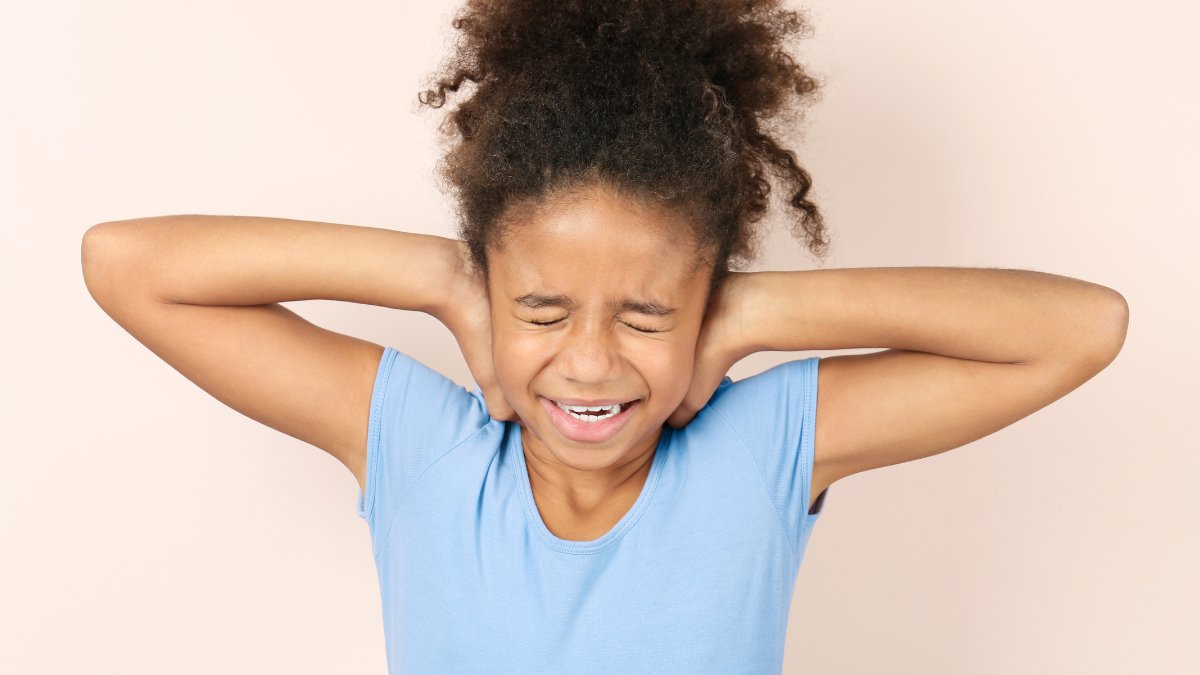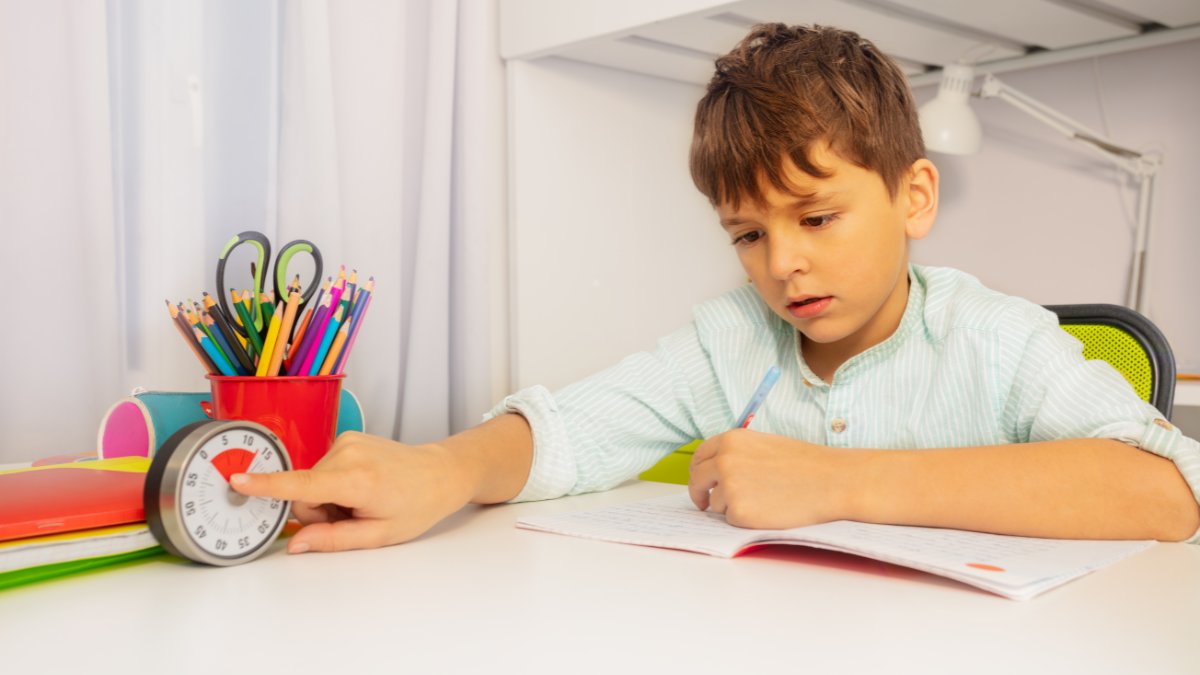What Is Hand Flapping?
Discover the reasons behind hand flapping and find supportive care strategies. Empathy, acceptance, and resources for a better understanding.
.avif)
What Is Hand Flapping?
Understanding Hand Flapping
Hand flapping is a behavior commonly observed in individuals across various age groups and is often associated with certain conditions and disabilities. Understanding the nature of hand flapping is important for dispelling misconceptions and providing appropriate support and care.

What is Hand Flapping?
Hand flapping refers to the repetitive and rhythmic movement of one or both hands. This behavior involves rapid, repetitive movements, typically involving the flexion and extension of the wrists and fingers. Hand flapping can occur in different forms, such as flapping, waving, or shaking of the hands.
Hand flapping is often observed in individuals with neurodevelopmental disorders, such as autism spectrum disorder (ASD). It can also be seen in individuals with other conditions such as sensory processing disorder (SPD) or intellectual disabilities. While hand flapping is commonly associated with these conditions, it is essential to recognize that it is not exclusive to them and can occur in individuals without any underlying disabilities as well.
Common Misconceptions
Despite its prevalence, hand flapping is sometimes misunderstood, leading to misconceptions and judgments. It is important to dispel these misconceptions in order to foster understanding and acceptance.
One common misconception is that hand flapping is solely a result of excitement or happiness. While hand flapping can indeed be a way for individuals to express joy or excitement, it can also serve other purposes. Hand flapping may serve as a means of self-stimulation or sensory regulation, a form of communication, or a way to manage emotions or anxiety. It is crucial to recognize that hand flapping can have diverse underlying reasons and should not be limited to a singular interpretation.
Another misconception is that hand flapping is a behavior that needs to be stopped or corrected. It is important to approach hand flapping with empathy and understanding, rather than trying to suppress or eliminate the behavior. Hand flapping is often a self-soothing or self-regulation mechanism for individuals, and attempting to stop it forcefully can be distressing and counterproductive. Instead, the focus should be on providing supportive care strategies that help individuals manage their sensory needs and emotions effectively.
By understanding what hand flapping is and dispelling common misconceptions, we can create a more inclusive and accepting environment for individuals who engage in this behavior. It is essential to recognize the diverse reasons behind hand flapping and provide appropriate support and care that respects and accommodates the individual's needs.
Reasons for Hand Flapping
Hand flapping is a repetitive motor behavior that can serve various purposes for individuals. Understanding the reasons behind hand flapping is essential for providing appropriate support and care. Here are three common reasons for hand flapping: sensory stimulation, communication and expression, and emotional regulation.
Sensory Stimulation
For some individuals, hand flapping can provide sensory stimulation. It may serve as a way to engage with the environment and regulate sensory input. The repetitive motion of hand flapping can provide a sense of comfort and help individuals with sensory processing differences to self-soothe.
Communication and Expression
Hand flapping can also be a form of communication and expression. For individuals who have challenges with verbal communication or expressive language, hand flapping may serve as a way to convey their emotions, needs, or excitement. It can be a non-verbal means of expressing joy, enthusiasm, or anxiety.
Emotional Regulation
Hand flapping can be a self-regulatory strategy used to manage emotions and cope with overwhelming situations. It may help individuals release tension, reduce anxiety, or redirect their focus. Hand flapping can serve as a calming mechanism and provide a sense of control in challenging or distressing situations.
Understanding these reasons for hand flapping is crucial in providing supportive care and creating an inclusive environment. It's important to remember that hand flapping is a natural behavior for some individuals and should be respected. By embracing empathy and acceptance, we can promote understanding and foster an inclusive society.

When to Seek Professional Help
Understanding when to seek professional help is essential when it comes to hand flapping. While hand flapping can be a normal behavior in certain situations, there are instances where it may indicate underlying developmental concerns or significantly impact daily life. In such cases, it is important to consult with a healthcare professional for further evaluation and support.
Developmental Concerns
If hand flapping is accompanied by other developmental concerns, it may be an indication of an underlying condition. Developmental concerns can include delays in speech and language development, lack of social interaction, or difficulties with motor skills. It is important to observe and document any additional behaviors or milestones that may be cause for concern.
Impact on Daily Life
Hand flapping becomes a cause for concern when it significantly impacts daily life and functioning. This can manifest in various ways, such as interfering with the individual's ability to engage in social activities, attend school or work, or perform daily tasks. If hand flapping becomes disruptive or prevents the person from participating in activities essential to their well-being, seeking professional help is advisable.
If you or someone you know is experiencing developmental concerns or significant disruptions in daily life due to hand flapping, it is important to consult with healthcare professionals who specialize in developmental disorders, such as pediatricians, psychologists, or developmental specialists. These professionals can conduct a comprehensive evaluation, provide a diagnosis if necessary, and recommend appropriate interventions and support strategies.
Remember, seeking professional help is not only beneficial for the individual experiencing hand flapping but also for their caregivers and loved ones. Early intervention and support can make a significant difference in promoting overall well-being and enhancing quality of life.
Supportive Care Strategies
When it comes to supporting individuals who engage in hand flapping, there are various strategies that can be implemented to create a supportive and understanding environment. These strategies focus on creating a calming environment, utilizing sensory integration techniques, and exploring alternative communication methods.
Creating a Calming Environment
Creating a calming environment is essential in providing individuals who engage in hand flapping with a sense of security and comfort. Here are some strategies to consider:
- Visual Environment: Ensure that the environment is visually soothing by using soft, neutral colors and minimizing clutter. This can help reduce sensory overload and create a calming atmosphere.
- Noise Control: Minimize unnecessary noise and provide options for sound regulation, such as using noise-cancelling headphones or creating quiet spaces.
- Lighting: Adjust the lighting to reduce harsh or flickering lights, as these can be overwhelming for individuals who are sensitive to visual stimuli.
- Routine and Predictability: Establishing a predictable routine can help individuals feel more secure and reduce anxiety. Consistency in daily activities can provide a sense of structure and comfort.
Sensory Integration Techniques
Sensory integration techniques can be effective in supporting individuals who engage in hand flapping. These techniques aim to regulate sensory input and promote self-regulation. Here are a few examples:
- Deep Pressure: Applying deep pressure through techniques like deep hugs, weighted blankets, or compression clothing can provide a calming effect for individuals who seek sensory input.
- Proprioceptive Activities: Engaging in activities that provide deep pressure to joints and muscles, such as yoga or heavy lifting, can help regulate sensory input and promote self-soothing.
- Oral Stimulation: Providing oral stimulation through activities like chewing gum, sucking on a straw, or using chewable jewelry can help individuals regulate their sensory needs.
Alternative Communication Methods
For individuals who engage in hand flapping as a means of communication, it is important to explore alternative ways to express themselves. This can help them effectively communicate their needs and emotions. Consider the following strategies:
- Visual Supports: Implement visual supports like picture schedules, social stories, or visual choice boards to assist individuals in expressing their wants and needs.
- Augmentative and Alternative Communication (AAC): Introduce AAC systems, such as communication boards, sign language, or electronic devices with symbol-based or text-based communication options. These tools can provide individuals with alternative means of expression.
- Social Skills Training: Provide social skills training and support to help individuals develop effective communication skills and strategies.
By implementing these supportive care strategies, individuals who engage in hand flapping can feel understood, empowered, and supported. It's important to personalize these strategies to meet the unique needs of each individual and to foster an environment of empathy and acceptance.
Empathy and Acceptance
When it comes to supporting individuals who engage in hand flapping, empathy and acceptance play a vital role. It is essential to foster a society that understands and embraces differences. This can be achieved through educating others and promoting acceptance of individuals who engage in hand flapping.
Educating Others
One way to promote empathy and understanding is by educating others about hand flapping. By sharing accurate information and dispelling common misconceptions, we can help others gain a better understanding of this behavior. Here are some key points to address when educating others:
- Hand flapping is a self-stimulatory behavior that individuals may engage in to regulate their sensory experiences, express themselves, or manage their emotions.
- It is important to recognize that hand flapping is not indicative of a person's intelligence or capabilities. Individuals who engage in hand flapping can have unique talents, skills, and strengths.
- Hand flapping is often associated with conditions such as autism spectrum disorder, but it can also be seen in other neurodevelopmental conditions or as a response to sensory overload.
- Encourage others to approach individuals who engage in hand flapping with empathy, understanding, and acceptance, rather than judgment or criticism.
By educating others about hand flapping, we can create a more inclusive environment where individuals who engage in this behavior feel accepted and supported.
Embracing Differences
Embracing differences is a fundamental aspect of promoting empathy and acceptance. It involves recognizing and appreciating the diversity among individuals and understanding that everyone has unique ways of expressing themselves. Here are some ways to embrace differences:
- Foster a culture of inclusivity where diversity is celebrated and respected.
- Encourage open conversations about hand flapping and other behaviors to promote understanding and acceptance.
- Advocate for inclusive practices in schools, workplaces, and other community settings to ensure that individuals who engage in hand flapping are given equal opportunities and support.
- Promote positive portrayals of individuals who engage in hand flapping in media and popular culture to challenge stereotypes and encourage acceptance.
- Engage in activities or initiatives that raise awareness and promote acceptance of individuals with diverse abilities.
By embracing differences, we can create a more accepting and supportive society where individuals who engage in hand flapping can thrive and be valued for who they are.
Promoting empathy and acceptance requires a collective effort. By educating others and embracing differences, we can contribute to a more inclusive society that values and supports individuals who engage in hand flapping. Remember, small acts of understanding and acceptance can make a significant difference in someone's life.

Community and Resources
When it comes to understanding and supporting individuals who engage in hand flapping, it's important to tap into the power of community and available resources. Connecting with others who have similar experiences or seeking professional assistance can provide valuable support and guidance. Additionally, online platforms can offer a wealth of information and resources. Let's explore some of these community and resource options.
Support Groups
Support groups play a crucial role in providing a safe and understanding space for individuals and families affected by hand flapping. These groups bring together people who share similar experiences, allowing for mutual support, empathy, and the exchange of information and coping strategies. Here are some examples of support groups:
Professional Services
In some cases, seeking professional assistance can be beneficial for individuals who engage in hand flapping. Professionals with expertise in areas such as developmental psychology, occupational therapy, and speech therapy can provide valuable insights, assessments, and interventions. Here are some examples of professional services that may be helpful:
Online Platforms
The internet offers a vast array of online platforms that can be valuable resources for individuals seeking information, support, and guidance related to hand flapping. Online platforms often provide access to articles, forums, blogs, and expert advice. Here are some examples of online platforms:
By engaging with support groups, accessing professional services, and utilizing online platforms, individuals and families can find the support they need to navigate the challenges associated with hand flapping. Remember, everyone's journey is unique, and it's important to find the resources and community that resonate with your specific needs and experiences.
Sources
https://www.apricott.com/autism-hand-flapping



.jpg)
.jpg)
.jpg)
.jpg)
.jpg)






